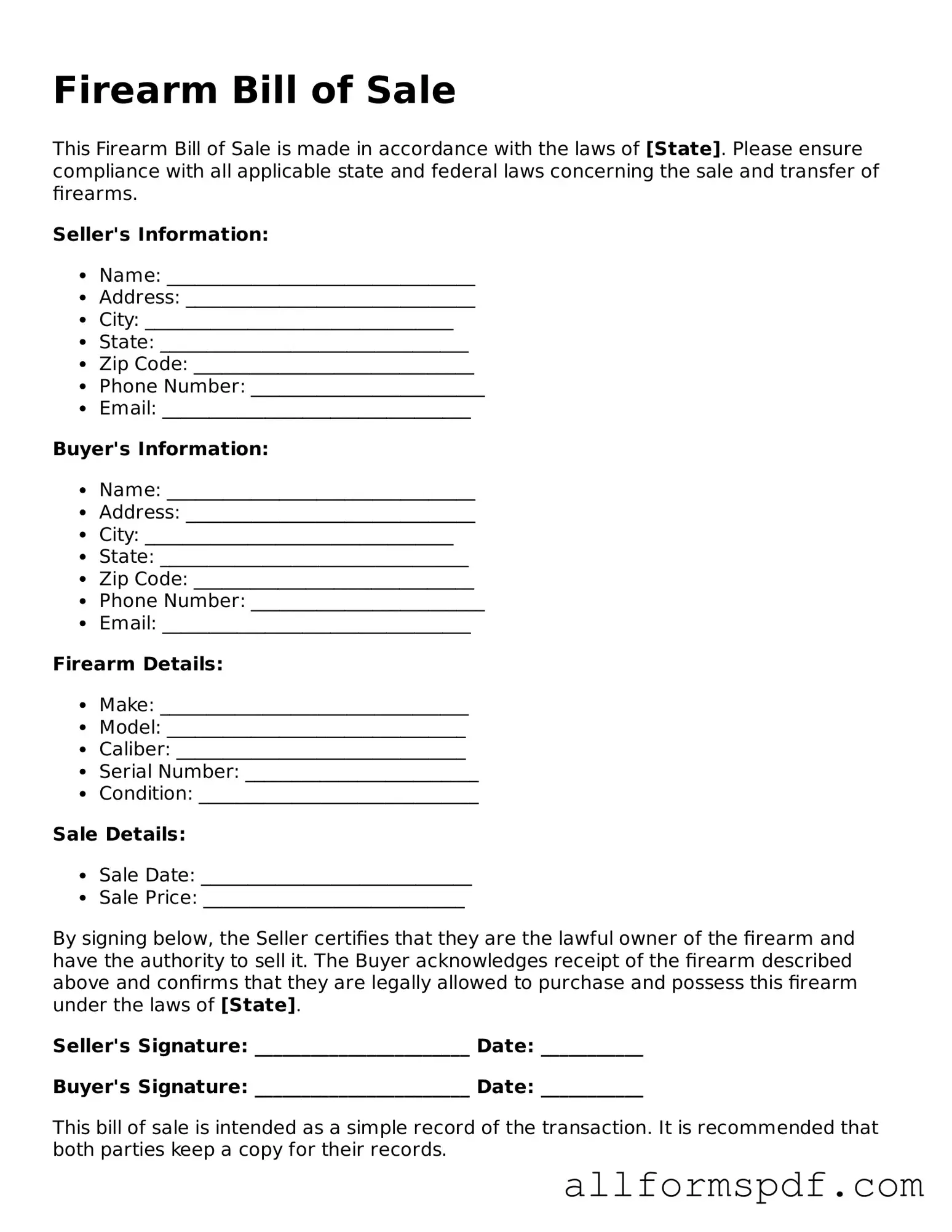When completing the Firearm Bill of Sale form, individuals often overlook critical details that can lead to complications. One common mistake is failing to provide accurate identification information. The form typically requires the seller's and buyer's names, addresses, and identification numbers. Omitting or incorrectly entering this information can render the document invalid.
Another frequent error involves not specifying the firearm's details clearly. The make, model, caliber, and serial number should all be included. If any of this information is missing or incorrect, it can create confusion regarding the firearm being sold. This lack of clarity may lead to legal disputes in the future.
Additionally, many individuals neglect to include the date of the transaction. This date is crucial for establishing the timeline of ownership and for any potential legal matters that may arise later. Without a date, the document may not serve its intended purpose effectively.
Signatures are another area where mistakes commonly occur. Both the buyer and seller must sign the form to validate the transaction. Failing to obtain one of the signatures can invalidate the sale. Furthermore, signatures should match the names provided in the identification section to avoid discrepancies.
People also sometimes forget to keep copies of the completed Bill of Sale. Retaining a copy is essential for both parties involved in the transaction. This documentation serves as proof of sale and can be critical if questions about ownership arise in the future.
Lastly, individuals may not be aware of the specific laws governing firearm sales in their state. Each state has different requirements regarding the sale and transfer of firearms. Not adhering to these regulations can lead to legal issues, including fines or penalties. It is important to research local laws before completing the form to ensure compliance.
